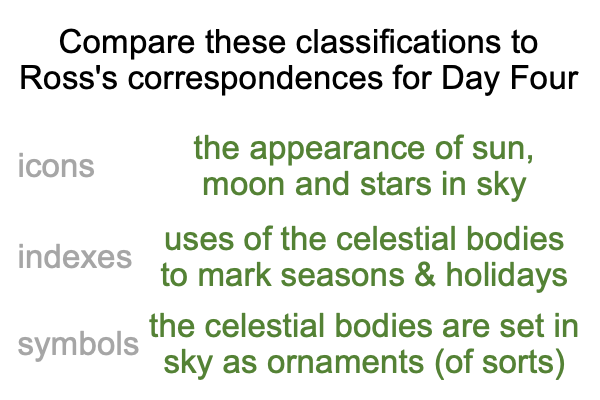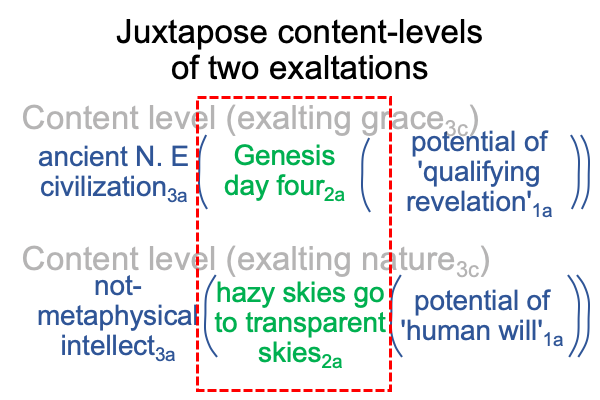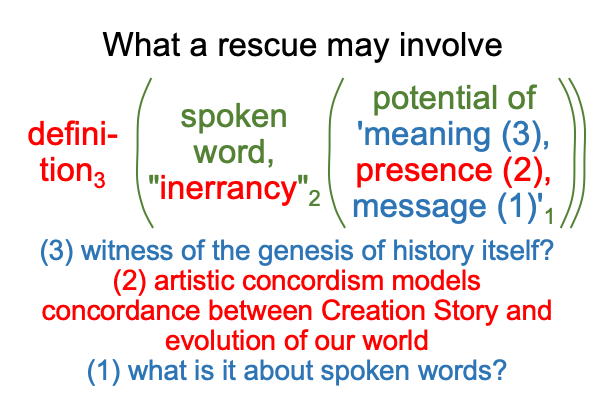0182 Does Ross’s method of identifying and testing correspondences work?
Yes, but classifying correspondences as icons, indexes and symbols works even better.
Here is my list of classifications for various correspondences for day four.

A sign-vehicle (SV) stands for its sign-object (SO) in regards to a sign-interpretant (SI).
This list implies that Genesis day four (SV) stands for the evolutionary epoch where the Earth’s atmosphere is transformed from carbon-rich to oxygen-rich (SO), on the basis of Peirce’s natural sign typology.
But, I wonder, can Peirce’s sign-typology be considered a sign-interpretant (SI)?
Or is the sign-interpretant (SI) the Gestalt-like and intuitive recognitions going on in the mind of someone who is both a Christian and a scientist?
0183 That is not the only issue.
Ross’s “moderate”… er… “artistic” concordism binds the content-level actualities for exalting grace3c and for exalting nature3c into a single actuality, designated by the dashed red box in the following figure.

0184 Surely, the intersection of the two content-level nested forms can be labeled.
Plus, that label has something to do with with the term, “inerrancy”.
The presumption is that both the Bible and the evolutionary sciences are inerrant.
The Bible is potentiated by revelation.
Science is potentiated by truth.
That is how Ross thinks about it.
So, this intersection is going to… um… shall I say… “confound” current potentialities1a… er… “expectations”1a.
0186 Chapter 17 is Hugh Ross at his best. This examination adds value by framing his search for ways to articulate his mission in terms of semiotics. Also, this examination reaches the same conclusion as Ross in regards to a rescued presence underlying the definition of the word “inerrancy”.
Here is a picture.

